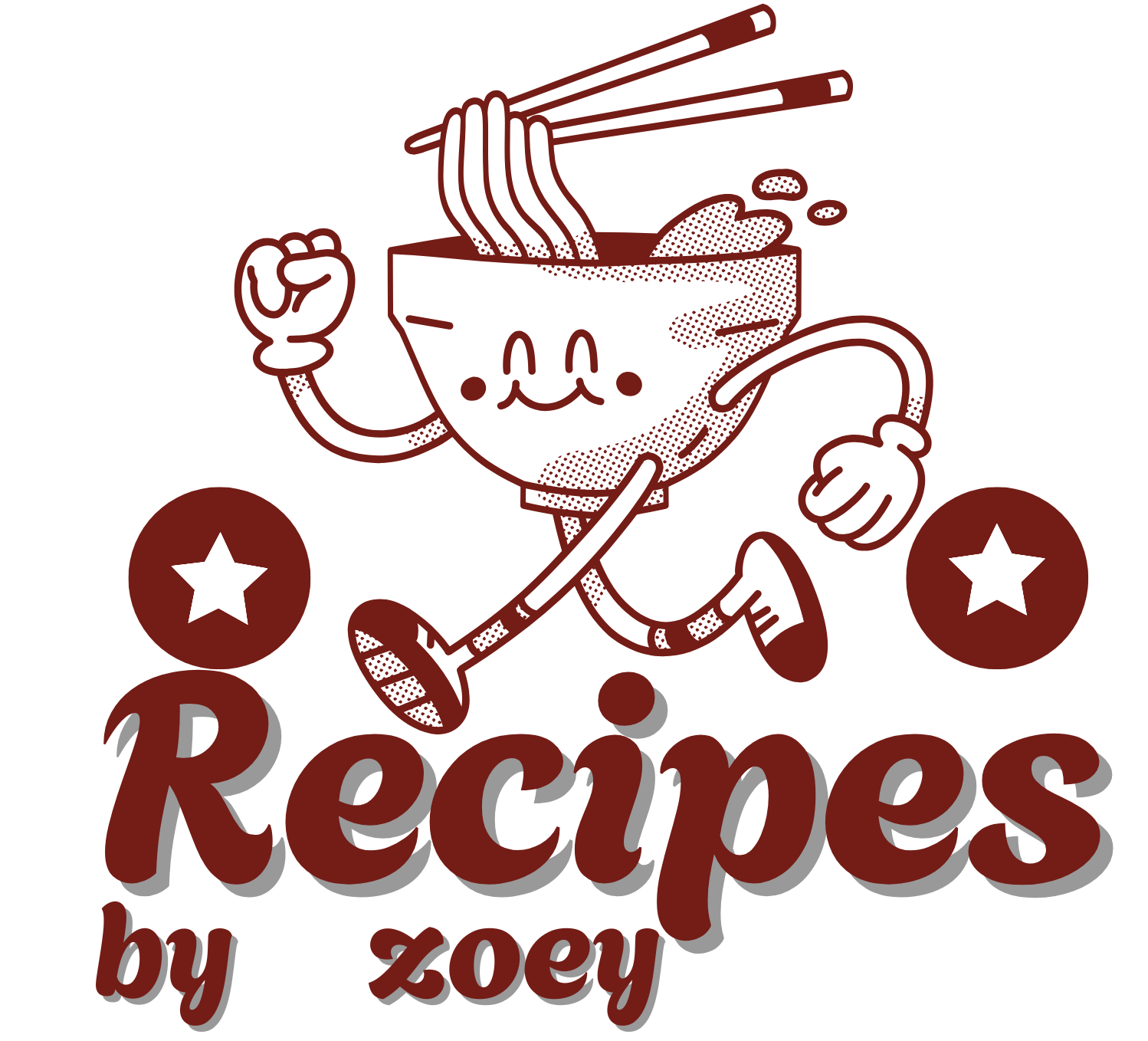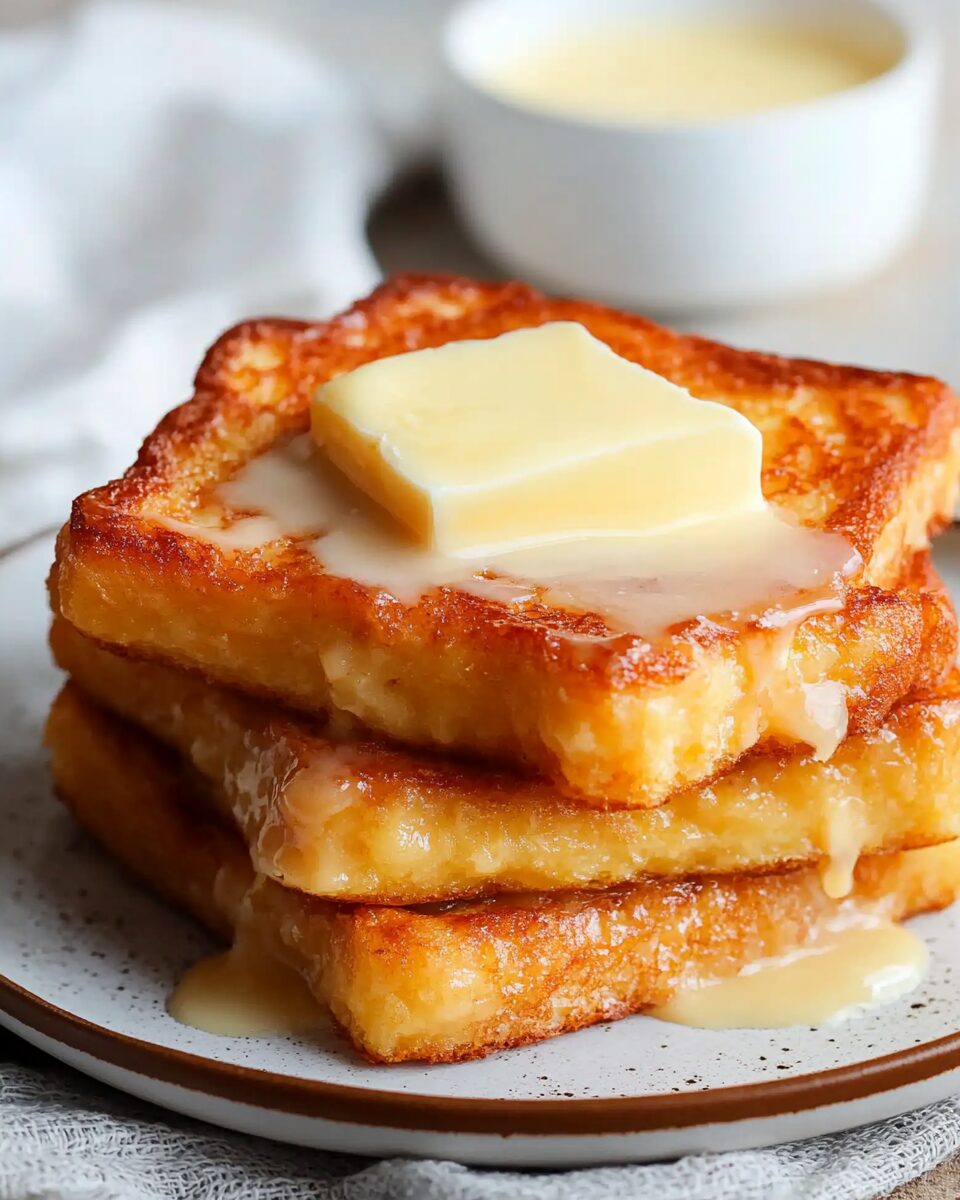Hong Kong Style French Toast is a crispy, golden, deep-fried treat typically served in Hong Kong cafés (cha chaan tengs). It’s made by layering soft milk bread with peanut butter, dipping it in beaten egg, and pan-frying it until crispy. Topped with butter and drizzled with sweetened condensed milk, this indulgent toast is a perfect afternoon snack, dessert, or breakfast. Easy to make in just 10 minutes, this dish fuses Western and Cantonese culinary influences for a nostalgic, street-style flavor.
Full Recipe:
Ingredients
-
6 slices milk bread (or any soft white/square bread)
-
4 tbsp smooth peanut butter (or substitute with Nutella, condensed milk, or any nut butter)
-
2 large eggs, beaten
-
1 cup vegetable oil (or any neutral oil like canola or sunflower)
Toppings:
-
2 tbsp butter
-
Sweetened condensed milk (or substitute with honey or maple syrup)
Directions
1. Assemble sandwiches:
Spread a thin layer of peanut butter edge-to-edge on two slices of bread. Stack them with the peanut butter sides facing each other. Place a third slice on top and press gently. Repeat to make two sandwiches.
2. Trim crusts:
Slice off crusts to create neat, square sandwiches.
3. Coat with egg:
Beat the eggs in a shallow bowl. Lightly dip each sandwich in the egg mixture, coating all sides without oversoaking. Let rest standing upright.
4. Fry:
In a heavy-bottomed pan, heat oil over medium-low (around 300°F). Gently place one sandwich into the hot oil and fry 30 seconds on each side edge, and 1–2 minutes per large flat surface, until golden brown. Repeat with the second sandwich.
5. Serve:
Top hot French toast with a pat of butter and drizzle with condensed milk. Serve immediately.
Nutrients (Per serving, 2 servings total)
-
Calories: 259
-
Carbohydrates: 8g
-
Protein: 14g
-
Fat: 20g
-
Saturated Fat: 5g
-
Sugar: 3g
-
Cholesterol: 164mg
-
Sodium: 225mg
-
Fiber: 2g
A Cultural Icon Born from Fusion
The origins of Hong Kong Style French Toast are rooted in the city’s colonial past, where British influences merged with traditional Cantonese tastes. In the mid-20th century, as Western-style cafés began to appear throughout Hong Kong, local chefs began experimenting with foreign recipes. French toast, originally a way to revive stale bread, was transformed into something richer, sweeter, and uniquely Hong Kong.
Instead of using stale baguette or sandwich bread slices dipped in milk and egg, Hong Kong-style toast uses pillowy milk bread—soft, rich, and subtly sweet. Instead of butter and syrup, it’s slathered with peanut butter, deep-fried for a golden crust, and finished with condensed milk and a thick pat of melting butter. The result is decadence in every bite, with contrasting textures and a mouth-coating richness that hits all the right notes.
Texture and Flavor: Crispy Outside, Creamy Inside
What makes this French toast so addictive is its texture. The exterior becomes incredibly crisp from the shallow fry, creating a delicate shell that gives way to the soft bread inside. Meanwhile, the peanut butter center warms during frying and becomes melty and creamy, oozing just enough without becoming runny. The balance of crispy, creamy, and airy textures is what sets this dish apart from both traditional French toast and American-style breakfast sandwiches.
Flavor-wise, it’s rich and balanced. The peanut butter provides a salty-sweet base, which pairs beautifully with the creamy condensed milk drizzle. The butter on top melts into the toast, enriching every bite. Some variations use fillings like kaya (coconut jam), chocolate spread, or custard, giving endless room for personalization. However, the classic peanut butter version remains a nostalgic favorite for many.
A 10-Minute Indulgence You Can Make at Home
One of the best things about Hong Kong Style French Toast is how accessible it is. You don’t need a deep fryer or advanced cooking skills—just a nonstick pan, some soft white bread, peanut butter, eggs, and oil. Assembly is quick: spread, stack, trim, dip, fry, and serve.
Even though it’s deep-fried, the frying process is short and manageable. With just a cup of oil and a watchful eye on the temperature, you get a golden crust without greasiness. Once out of the pan, the toast is topped with butter and drizzled generously with sweetened condensed milk—a finishing touch that brings everything together into one decadent bite.
For those avoiding deep-frying, the toast can also be pan-fried in a smaller amount of butter or oil. While the texture won’t be quite as crispy, it still delivers great flavor and a pleasing crunch.
When and How to Serve Hong Kong Style French Toast
In Hong Kong, this dish is often enjoyed with a glass of milk tea or lemon iced tea—both classic cha chaan teng beverages. It’s served throughout the day, often as a snack between meals, but also popular as a quirky breakfast or after-dinner dessert.
At home, you can serve it as part of a weekend brunch, afternoon tea, or even a fun dessert at a dinner party. Its dramatic appearance—golden, square, and drizzled in syrup—makes it a crowd-pleaser that’s as photogenic as it is tasty. For a more balanced plate, pair it with fresh fruit or a lightly dressed salad to offset the richness.
If you’re feeling creative, serve it with a scoop of ice cream and a dusting of cinnamon for an over-the-top dessert version. Alternatively, use flavored butters like honey butter, cinnamon butter, or salted caramel butter for an extra layer of indulgence.
A Perfect Dish for Customization
While the classic peanut butter filling is iconic, this toast is an ideal blank canvas for experimentation. Swap in hazelnut spread, lotus biscoff, almond butter, or even cream cheese for a unique twist. If you’re feeling adventurous, try blending flavors—like peanut butter and banana slices, or kaya and shredded coconut.
The toppings, too, can be customized. Sweetened condensed milk is traditional, but you can drizzle honey, maple syrup, or even fruit compote. Powdered sugar adds a light dusting of sweetness, and toasted nuts or seeds offer a contrasting crunch.
For those wanting a savory take, fill the toast with ham and cheese, then top with a fried egg. This variation transforms the dish into a hearty meal reminiscent of a Monte Cristo sandwich.
Tips for Perfect Results
To get the best texture, use soft milk bread or any thick, fluffy white sandwich bread. Trim the crusts to ensure an even golden brown finish and a more elegant presentation. When dipping the toast in the beaten egg, coat all sides evenly but avoid oversoaking—it should be moist, not soggy.
Fry over medium-low heat to control browning and prevent burning. The oil should be hot enough to sizzle gently when the sandwich is added. Flip carefully to maintain the structure, and press lightly with a spatula to help the sandwich fry evenly.
If making for a group, you can keep fried toasts warm in a low oven (around 200°F/90°C) while you prepare additional batches. Just wait to add the butter and syrup until serving to preserve the toast’s crispness.
A Taste of Nostalgia and Street Food Charm
Hong Kong Style French Toast is more than just a dish—it’s a cultural experience. Each bite brings with it a piece of Hong Kong’s vibrant culinary history, rooted in the busy, eclectic atmosphere of its tea cafés. Whether you’re recreating it at home for nostalgic comfort or discovering it for the first time, it delivers that rare combination of simplicity and indulgence.
The fusion of Western preparation and Asian flavors is what makes this toast so special. It captures the essence of Hong Kong’s unique food culture: bold, creative, and joyfully unpretentious. It’s comfort food with character, a street-style snack that’s worthy of center stage.
Conclusion
Hong Kong Style French Toast is a shining example of how a few simple ingredients—bread, peanut butter, eggs, and condensed milk—can come together to create something deeply satisfying and culturally rich. With its crispy exterior, creamy filling, and luscious toppings, it offers an unforgettable combination of texture and flavor that’s perfect for any time of day. Whether you enjoy it as a nostalgic treat, a breakfast indulgence, or a café-inspired dessert, this toast is sure to become a go-to favorite. Easy, quick, and bursting with flavor, it’s a timeless recipe that captures the heart of Hong Kong in every bite.

